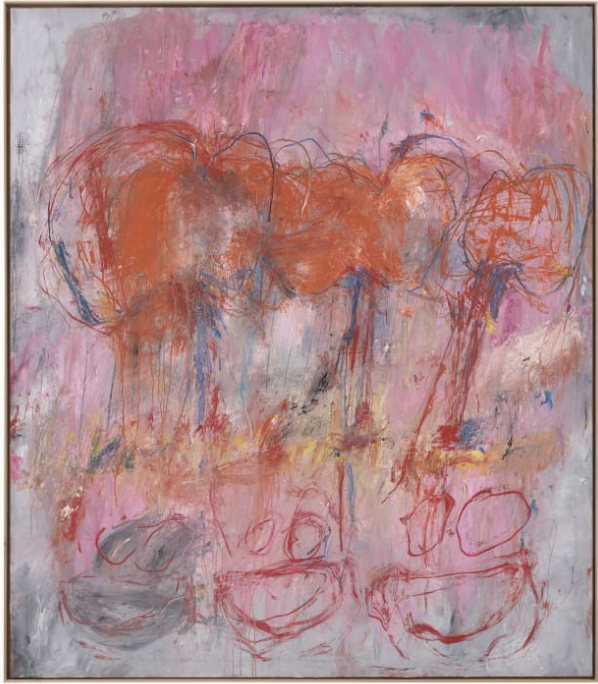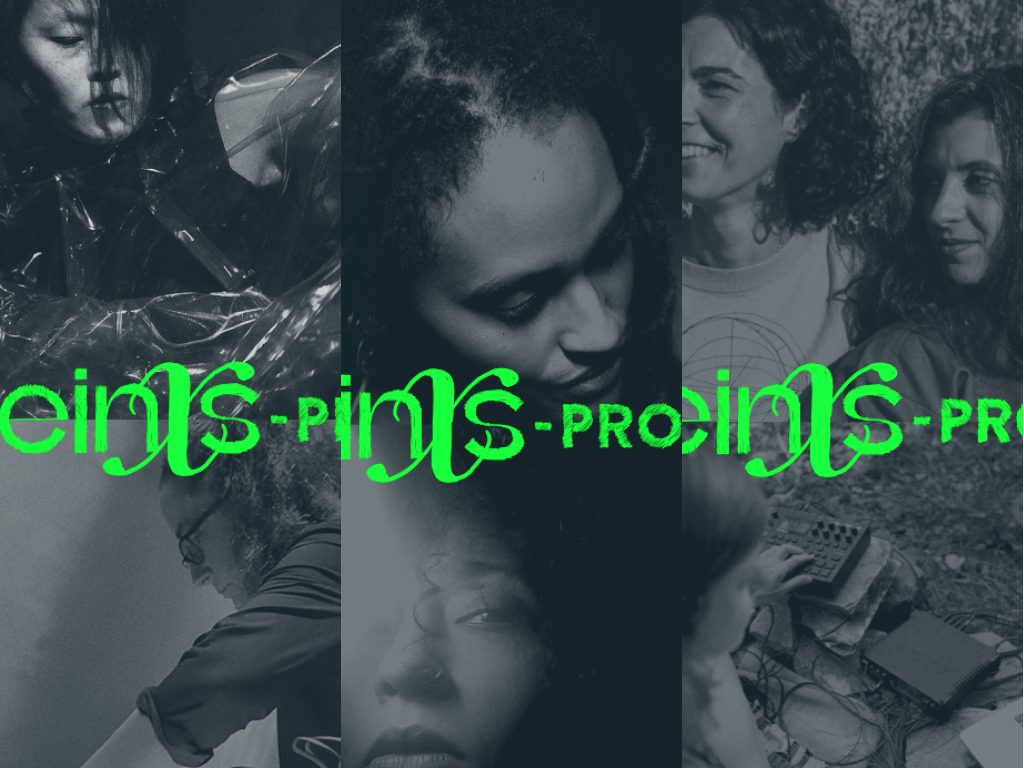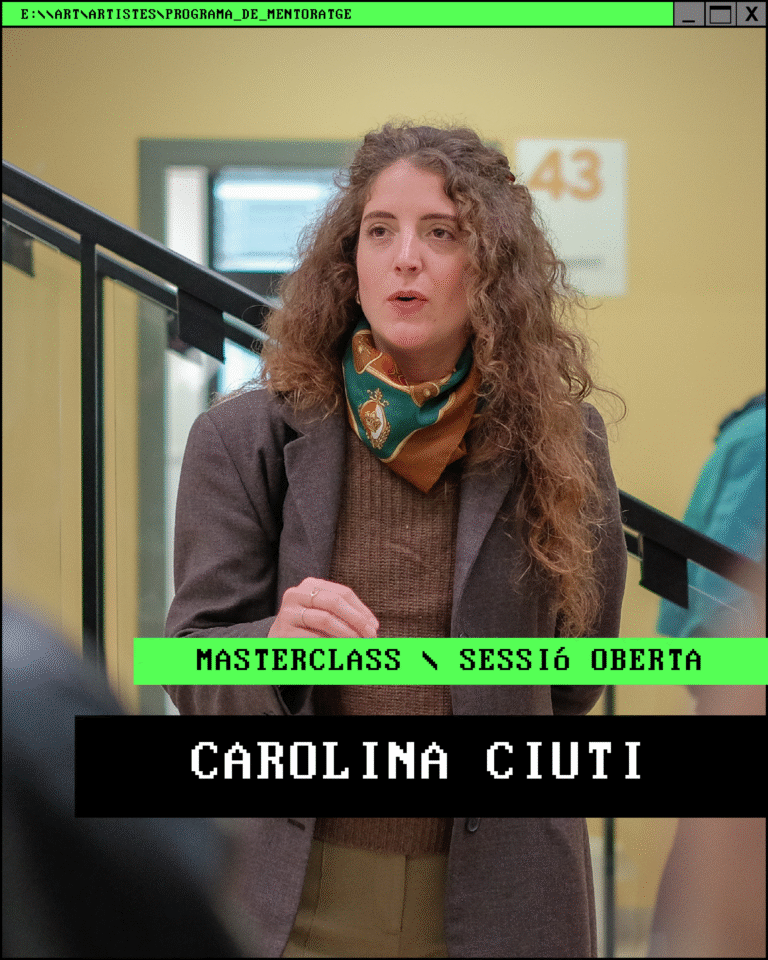Last summer, coinciding with the birth of her son, Marria Pratts spent two months living in a manor house in the municipality of Son Negre, in Mallorca. The impressions collected by the artist during this period, along with her observations of life forms present in the vicinity of the house, were captured in a series of sketches and notes made in several notebooks. These drawings formed the basis for the paintings now brought together in “Florescence”, the exhibition hosted by Mayoral gallery between May and July.
The title of the exhibition refers to the process of maturation of trees and plants, which manifests itself with the appearance of flowers. This flowering period marks the transition from a vegetative stage to a reproductive stage. Thus, the exhibition aims to be the reflection of this vital process: a moment of latency and openness to the world that is reflected in her painting.
Since the beginning of her career, the artist has developed an artistic language using formal resources and experimental methods that highlight the processual qualities of painting. Pratts observes the transformations of the pictorial space and dialogues with it through a system of action and reaction. Colour and figurations emerge in an improvised manner, as if painting were a completely alive and porous space that needs to be patiently cultivated. Similarly, in the context of the exhibition, the notion of florescence also refers to the consistency of memory and the mechanisms that bring memory to the fore.
In this respect, a few months ago Marria Pratts recovered and digitized several family films that she viewed for the first time while working on the pieces in the exhibition. These films included film experiments created by the artist’s mother, such as the one included in the exhibition. This confluence of media and authorship shows the changing structure of the bondings. Thus, although they are set in very different temporal spaces—the early 1980s, in the case of the film, and the more recent past, in the case of the paintings—they now come together in the same space and in the same present.
The motifs that Pratts identifies as a common thread of this new group of works include the tones of dawn and dusk. Sunrise and sunset provide atmospheric and light conditions with a predominance of cobalt blue, grey, yellow and orange-red: Veig el sol despertar i el món caminar (I see the Sun Wake Up and the World Walk) (2025). These colours evoke the stillness at the beginning and end of the day. A stillness that favours the presence of animals, such as the cow-heron: Vaca i Garsa. Epifania a Son Negre (Cow and Heron. Epiphany in Son Negre) (2025). Pratts introduces this composite figure, half bovine and half bird, based on a real encounter. The heron and the cow—the former resting on the back of the latter—embody a perfect symbiosis between the aerial and wild and the domesticated and happily terrestrial. This and other representations of animals in Pratts’ work can be read from a tradition that connects her to artists such as Rosa Bonheur and Renée Sintenis who, precisely because they chose animals as the subject of their paintings and sculptures, were unjustly considered minor artists.
The exhibition fluctuates between the monumentality of painting and the intimacy and simplicity of drawing. No hierarchy is established between one medium and the other; instead, they are presented as complementary parts of the same investigation. The paintings, due to their dimensions, require the mobilization of the body during their creation and, once exhibited, they propose a physical, almost immersive experience. By contrast, drawings are presented as an immediate tool, a way of documenting fleeting moments, as if they were studies from life that, in this case, avoid realism. The spatial and technical limitation of drawing responds to a work methodology similar to that of the diarist. In this way, drawing becomes a daily record that, through accumulation, reveals the persistence of certain images and, at the same time, makes the passage of time palpable.
On the surface of the canvas and on the sheet of paper, the repetition of the strokes describes nervous beams. Colour appears as a jet and, when it congeals on the canvas, it describes textures and landscapes crossed by mythical figures, animal presences or a burst of laughter: El Teu Somriure (Your Smile) (2025). It is a painting of emotion, physical: a dance. A path of self-discovery and, at the same time, an act of hope.
“Birth and death—says Pratts—are universal acts, but they are experienced privately. These paintings are my tools to think about myself and face these acts. Love, melancholy and longing are ideas that converge in ‘Florescence’. I understand these three states as driving forces of transformation.”
The works brought together in “Florescence” seem determined to restore the balance between presence and absence, between the luminosity of the day and nocturnal lethargy. If vitality and exuberance are the traits that characterize Pratts’ work, this exhibition becomes an invitation to celebrate life, with everything it entails: both its revulsive force and its fleeting condition.





